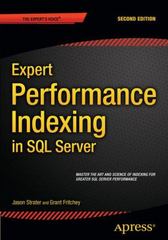Question
I need help with SRS document from this vision and scope: 1. Business Requirements 1.1 Background, Business Opportunity, and Customer Needs The town needs a
I need help with SRS document from this vision and scope:
1. Business Requirements
1.1 Background, Business Opportunity, and Customer Needs
The town needs a new digital system that replaces the archaic and increasingly difficult system that is already in place for their library. This new platform will be easier for librarians to edit the stock of the library and keep track of all inventory. Furthermore, it will be easier to add new objects to the system. This system will not only benefit the librarians, but it will benefit the patrons as well. Patrons are tired of using the old system for checking out books; with the new system, patrons will be able to search for books and check the status of the books they have currently checked out. The new system will offer more services for the patrons as well such as inter-library loans, donations, volunteer opportunities, and the ability to reserve rooms at the library. Overall, this system will keep the library in a much more organized and comprehensible state.
Approximately 60% of patrons return books late and are subject to a late fee; because of this issue, there are many patrons who are unable to check out the popular books because they are late. The system will minimize this percentage due to the ability to check more easily when the book is due/when it will be late. The search feature on the system will minimize the time a patron spends trying to find a book in the library, which could range from 10-30 minutes. People, in general, do not like to ask for help; therefore, this system relieves the possible stress in patrons to ask for help. There is a 40% possibility for librarians to make clerical errors in adding/editing/removing library items in the current system that is in place. With the new system, it will make this process much less prone to error, which, in turn, creates a more accurate environment for both librarians and patrons.
1.2 Business Objectives and Success Criteria
BO-1 Reduce late books by 50% within 6 months of implementation.
BO-2 Reduce the amount of clerical mistakes in adding/editing/removing library items by 70% within 6 months of implementation.
SC-1 Have 80% of current library patrons create a profile on the new system within 6 months of the implementation.
1.3 Business Risks
R-1: Librarians may not want to learn a new system
R-2: Library patrons do not make user accounts
R-3: Patrons may have adapted to the current system and will not want to learn the new one.
R-4: Librarians will most likely make mistakes due to their unfamiliarity to the new system, at first.
R-5: If a new system is not implemented the library runs a risk of falling behind to competitors due to an outdated system.
R-6: By not updating the system the library risks losing patrons that are unsatisfied with the current system.
R-7: By updating the system the library runs the risk of losing patrons that were used to the old system.
R-8: Some patrons may not have much experience with computers and the new system could be too hard for them to understand.
2. Vision of the Solution
2.1 Vision Statement
This system offers a seamless way for patrons to access various library systems, check books out/in, and check the late status of their checked out books, which will reduce the amount of late books. This system will minimize the possibility of clerical mistakes by librarians and, in turn, it will be more accurate in representation of book availability and of the newest additions to the library itself. The system will create an organized and orderly atmosphere for both librarians and library patrons.
2.2 Major Features
FE-1: Create and maintain a library catalog
FE-2: Add/remove/edit library items
FE-3: Search items in the library
FE-4: Borrow and return items
FE-5: Place items on hold when they are not on the shelves
FE-6: Create personal accounts
FE-7: Create/edit/remove library events in a public calendar
FE-8: Access a research database
FE-9: Offer another set of systems (interlibrary loan, reserve study rooms, donate, volunteer
FE-10: View/cancel library fees
FE-11: Create/maintain library blog
FE-12: Add/remove databases
FE-13: Maintain library accounts
2.3 Assumptions and Dependencies
AS-1 Library is run on standard networked PCs
AS-2 Patrons have access to a computer to create a user account
AS-3 Librarians/Patrons are capable of using/learning a new system
DE-1 Patrons will have a user account
DE-2 Have relations with other libraries in order to initiate interlibrary loan
DE-3 Patron and librarian involvement/willingness to transition
Step by Step Solution
There are 3 Steps involved in it
Step: 1

Get Instant Access to Expert-Tailored Solutions
See step-by-step solutions with expert insights and AI powered tools for academic success
Step: 2

Step: 3

Ace Your Homework with AI
Get the answers you need in no time with our AI-driven, step-by-step assistance
Get Started


